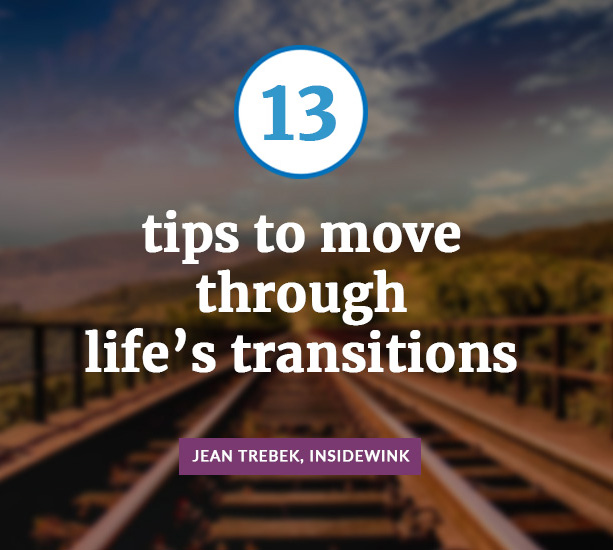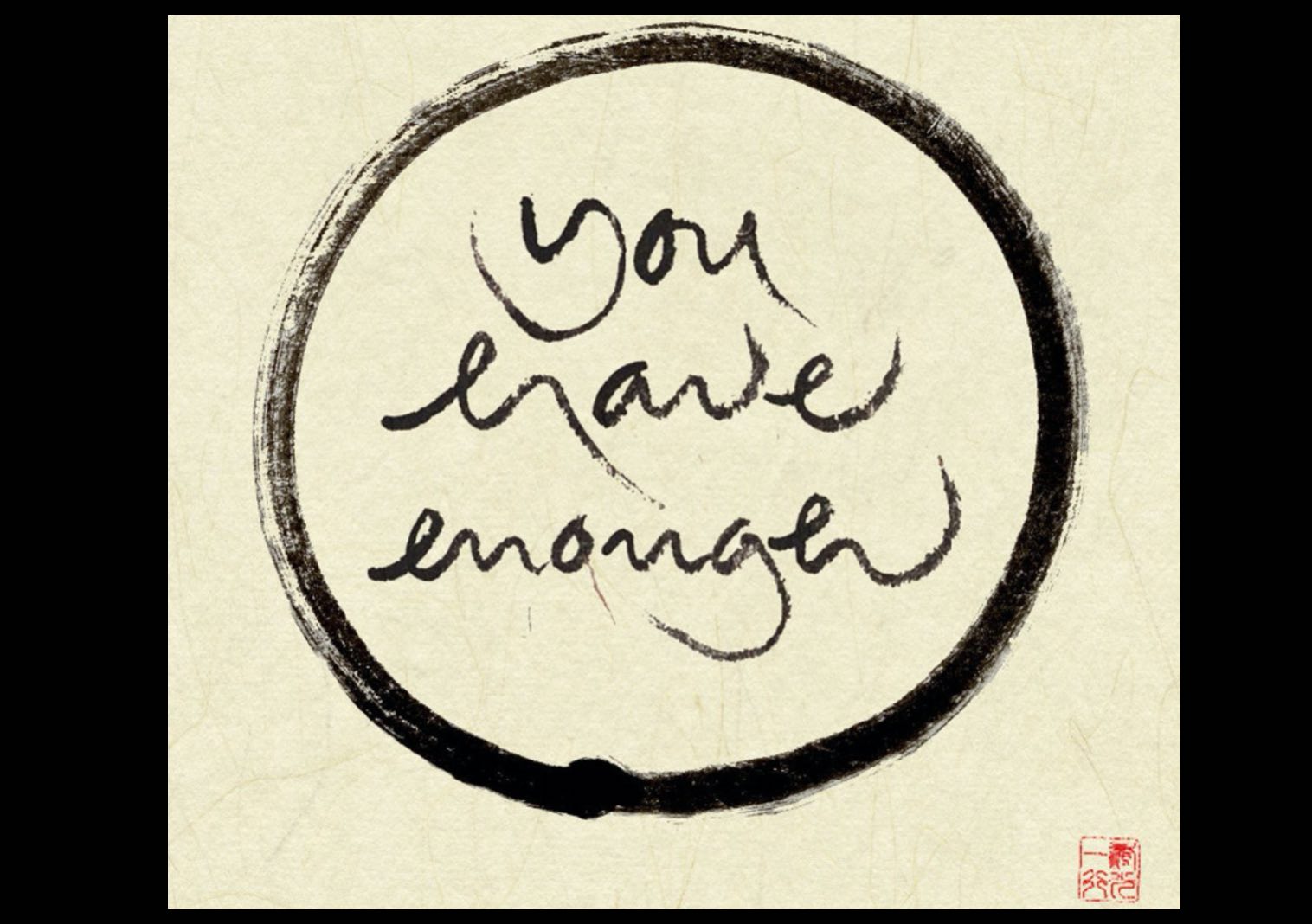
When I think about insidewink’s theme of Improvement, I am inspired. I am one of those people, who even on my toughest days, is always committed to being the best version of myself. But, there is something I want to share that so important for all of us to recognize… Self-Improvement is not linear. It is a process.
Amy McLaughlin-Margolis is a Licensed Clinical Social Worker and Co-Founder/Director of Santa Monica Counseling in California. She specializes in treating eating disorders, addictions, anxiety, depression, codependency and adoption-related issues.
It’s About Progress, Not Perfection
To borrow a phrase from 12 step programs, self-improvement is “Progress, Not Perfection.” And this is not because we are weak, willful or “just the way we are.” It is because we have these great brains that:
1. Want to help us change.
2. Remember everything.
3. And, inherently do everything in their power to protect us.
How does this get in the way of change or slow it down?
We have all heard words like “sabotage,” “backlash,” and in addiction circles, “relapse.” These phenomena occur when you have become aware of old negative thinking or behavioral patterns, have let them go, have started feeling better, and then BAM! Something happens, and in spite of yourself, you “pick up” the old behavior or thinking. Why?
Negative Narratives & Our Inner Critic
Why, when you become aware of your negative narratives or self-destructive behaviors and want to change, do these thoughts and behaviors tighten their grip?
To illustrate, meet Jen. Jen is a binge eater. Over the past few months she has been doing great on a new food plan, her weight is going in the right direction, and she has been showing up with new confidence and feeling good. A few weeks into this new lifestyle, Jen is invited to a party. She is pretty excited to go, having slimmed down a bit and even buys a new dress.
At the party Jen is feeling okay, staying conscious of the food, connecting with people, and enjoying a few hard earned compliments when she runs into a former high school classmate, Tina. Tina is thrilled to see her. Big Hugs. Then, in conversation, Tina shares about her big promotion at work and beautiful new baby. Ten minutes later, Tina’s hot husband saunters up to whisk her away and introduce her to someone and Jen finds herself alone next to the chips and dip.

“What’s a few chips?”
Jen thinks,
“My plan was to go for raw veggies, but I don’t see any here.
What’s the big deal?
I’ve been so good.
I deserve a lil’ somethin’, somethin’…”
It’s not so bad until she gets home and, still hungry, goes for a couple tablespoons of her roommate’s almond butter. Then feels,
“Well, I already blew it. I’ll just go for some cold pizza from last weekend.”
Then, more zoned out, she is off to the races with the cereal, Doritos and ice cream.
It is fun going down, but not really. Jen wakes up the next morning demoralized. Her inner monologue is saying,
“You piece of crap! See. You thought you could change, you started to feel good, but what a chump. Look what happened?! You failed. You always fail. You are fat and always will be!”
A big case of the “f$%k-its” sets in!
And you know it will be days, maybe weeks, before Jen musters up the self esteem and will to start again.
Do you relate to Jen or know someone who might?
Good. Welcome to the human race.

Recognizing, understanding and managing your own Critter Brain is essential to achieving self-improvement in your life.
Why Do We Self-Sabotage?
Why, when we change for the better and feel so good, do we get in our own way? As if our brain is at war with itself. Well, because in a way, it is.
Introducing: Critter Brain! I am not a brain expert, but bear with me. Because if you want to pursue any goals and dreams or if you just want to keep improving in your life…recognizing, understanding and managing your own Critter Brain will be essential.
What is Critter Brain?
In layman’s terms, your brain has three main parts.
Critter Brain is a combination of Brain One’s survival instinct with Brain Two’s fight/flight/freeze response.
Brain One: Survival
Brain One is the brain stem and cerebellum, also known as the Reptilian Brain, which is located at the base of your skull. This is the primitive part of the brain that we take for granted. It focuses on vital survival and bodily functions such as, breathing, temperature, and balance. Regarding change, Brain One sees it as unfamiliar and therefore, an unnecessary threat to your survival.
Brain Two: Emotion
Wrapped around Brain One is Brain Two, which includes the Limbic System, Amygdala and Hippocampus. Brain Two is also referred to as the Mammalian Brain and its primary focus is on love, safety and belonging. It is the control center for your emotions, moods, short-term memory and your fight/flight/freeze response. Regarding change, Brain Two has to see it as not a threat to your sense of love or belonging, nonthreatening to your comfort zone.
Brain Three: Thinking
Brain Three, wrapped around Brain Two, is your Neocortex and it is referred to as your “Thinking Brain.” The most evolved area of the brain, it is where abstract thinking, problem solving, and creative ideas take place. Brain Three enables us to learn language, be successful socially, plan for the future, and be spiritually conscious. Its focus is on actualizing as a person. Regarding change, Brain Three has to be motivated by the idea.
Why Critter Brain Takes Over
It is important to know that your Critter Brain is your subconscious. It holds all of your memories and makes up 90% of your brain. From ages 0-6 you are in a theta brain wave state, essentially being hypnotized. You are soaking up the environment you are raised in. How do your caregivers treat you? What are they modeling for you? Do you feel safe? Loved?
During this time you make decisions about yourself and the world that you consider to be the truth. Whether these truths are negative or positive, it doesn’t matter. Your Critter Brain records them and they are the narratives you rely on to survive from then and into adulthood.
“Critter Brain’s job is to protect you and it doesn’t differentiate between good and bad, safe and unsafe.
Later, when you get older, and maybe get help to look at your old negative beliefs and try to change, you essentially have 10% of your brain that is conscious to do so. The problem is that Critter Brain’s job is to protect you and it doesn’t differentiate between good and bad, safe and unsafe. Any change for Critter Brain is perceived as a threat to our survival. And thus, Critter Brain will kick into high gear to bring you back to the familiar.
Feeling Like Crap & Survival Mode Triggers
In Jen’s case… growing up, her dad was funny, the life of the party, and an alcoholic. When he was home, sometimes it was magical and sometimes it was horrible, depending on his mood and whether or not he was drinking. In turn, Jen’s mom’s mood was dictated by her husband’s mood and his alcoholism. So, Jen never really knew what she was going to get… a dad who adored her and a happy mom or a dad who was checked out and a mom who was bitter, critical and controlling.
Early on Jen decided, “If I were more special… prettier, funnier, smarter, my dad wouldn’t drink. He would love me all the time, not just sometimes. I am not enough.” With her mom Jen likely learned to walk on eggshells, read the room, always try to be perfect.
And God forbid Jen express any feelings of her own, as there was nobody emotionally available to validate or comfort her through them. So she learned not to trust her feelings and shut down.
“What is my Critter Brain saying?”
Identify the old tapes that get triggered whenever you are changing for the better. You may want to explore where these “truths” originated, how they have served you all these years and how they hold you back now.
To cope with the ensuing loneliness and chaos of her home life, Jen turned to food. Food is so comforting and predictable. If you buy Oreos, they taste like Oreos and if you hide ‘em under your bed, they are going to be there when you need them. They won’t let you down, like people do.
As Jen grows into adolescence, she begins to gain weight. Her closest friends begin to shop a lot, wear make up, look great, and date. In comparison, Jen feels frumpy and with no weekend plans she isolates more with the food, gaining more and more weight, becoming more and more invisible.
Adding to her sense of shame are her mom’s pep talks where she pushes Jen to try a weight loss program, assures her she will feel better and tells her how all these women she knows “met their perfect mate when they started taking care of themselves.” Translation… “when they got skinny.”
So now, teen Jen is adding to those early Critter Brain tapes, “I am fat and ugly in comparison to my friends. To be happy and find a man, I need to be skinny and I can’t stop eating. I am fat and unworthy of love.”

Meditation, yoga and repeating affirmations can boost your brain’s ability to put your mind back into a theta state and can actually begin to re-write your unconscious old thinking, Critter Brain.
When we meet Jen she is doing all the right things… she started a weight loss and exercise regimen, she started going to therapy and she even began to dabble in online dating. In general she is “hanging out in Brain Three (her neocortex Thinking Brain)” and taking actions toward all her life goals, to lose weight, adapt a healthy lifestyle and find a life partner. Feeling confident, good and hopeful, all is well until she goes to the party and runs into Tina.
A seemingly benign warm hug and exchange with an old friend at a party and all of a sudden Jen feels like crap. And she doesn’t even know it initially, it’s like she doesn’t even have the pause to check in with herself before reverting straight to old coping. All the good things Jen has been doing disappear and her Critter Brain takes over.
Witnessing Tina’s successful life triggered Jen right into survival mode and all the unconscious negative beliefs,
“I am fat, I will always be fat. Who did I think I was to believe I could change? You need to be thin to get a man. And if you don’t get a man you are not worthy. I will never measure up. Easier to stay fat, hide out, soothe with food. I will probably die alone in my apartment with my cat. And btw where is that cold pizza?”
RELATED: Stay Healthy Inside & Out With These 4 Simple Rules
Steps to Combat Your Critter Brain
STEP ONE: IDENTIFY
Learn to identify when Critter Brain takes over. This is relatively easy if you have been feeling good then something benign happens and you are off the charts triggered with a bunch of old defeatist, negative feelings that feel like the truth, because they are just so familiar. And you will feel a little crazy, like, “What just happened?!” To borrow a phrase from 12 step programs “When it’s hysterical, it’s historical.” Critter Brain is historical.
STEP TWO: ACTIVITIES
Do activities that boost your brain’s ability to get back into the Brain Three, or as I like to refer to it, your Higher Self. What are these activities? Hypnotherapy, meditation, deep breathing, yoga, repeating affirmations, or anything that quiets the mind. These activities put your mind back into a theta state and can actually begin to re-write your unconscious old thinking, Critter Brain.
3 Exercises for Changing Old Ways of Thinking and Being

1. Put Your “Big Me, Higher Self” in Charge
One great activity is a journaling exercise called Big Me/Little Me. You label your Critter Brain “Little me” and your Higher Self Thinking Brain (Brain Three, neocortex) “Big me” and engage the two in dialogue through your writing.
This helps your “Big Me” to become your own Inner Loving Parent reassuring your Little me, “Change feels scary, but we got this, you are safe and I will take care of you through all the positive change ahead.”
The point is to integrate the two parts of your brain and make sure your Big Me, Higher Self is in charge.

2. Identify Triggers & Replacement Thoughts
Another great exercise is to investigate this question, “What is my Critter Brain saying?” Identify the old tapes that get triggered whenever you are changing for the better. You may want to explore where these “truths” originated, how they have served you all these years and how they hold you back now. And, you definitely want to decide what you would like to replace them with. This is a great way to choose your own affirmations. In Jen’s case…
Critter Brain:
I am not good enough
Originated:
Mom was so critical and controlling. Dad always left to drink.
Holds Me Back:
I don’t show up for what I want. I don’t feel good in my life and my body. I hide, I eat, I feel shame.
Replacement Thought:
I am lovable and more than enough.
After you do this exercise, only re-write the Replacement Thoughts. Then, read them every night and/or every morning, or any time you like! You are reprogramming your brain to be in alignment with who you want to be.
AFFIRMATIONS: Positive reminders to encourage, motivate and inspire.

3. Repeat “Higher Self” Affirmations
When you find yourself in full Critter Brain Takeover, I suggest another great journaling exercise. Pick an affirmation from your Higher Self and write it 10 times with Critter Brain’s arguments in between. And, I am telling you, by number 10 you are usually integrated and calmed down.
With Jen this would be great to do before she reaches for the ice cream…
1. Higher Self: I am happy, healthy and fit.
Critter Brain: But I am still fat
2. I am happy, healthy and fit.
I am working on that
3. I am happy, healthy and fit
But you really messed up at the party
4. I am happy, healthy and fit
So you messed up. You were doing really well and can again.
5. I am happy, healthy and fit
I guess that’s true, it just feels like I have a long way to go
6. I am happy, healthy and fit
Okay but what’s the alternative
7. I am happy, healthy and fit.
You’re right! I do not want to go back to hiding out and bingeing that was hell.
8. I am happy, healthy and fit
Yes, just keep going. You are running your own race
9. I am happy, healthy and fit
True, maybe I should call my therapist, do some meal prep and take a nice walk today. All things that were really helping before.
10. I am happy, healthy and fit.
Yes! You can do this!
All of these exercises help with brain integration, bringing consciousness to your subconscious Old Critter Brain, strengthening your Brain Three (Thinking Brain, Neocortex) or Higher Self.
In the beginning, when trying to change old ways of thinking and being, you may have to do these exercises often, but, slowly you will develop a strong Healthy Inner Loving Parent, who will be at the helm of your life more and more, and Self Improvement will feel more exciting, natural, and graceful.
Good luck and God Bless!

13 Tips For Getting Through Changes
“Life’s transitions can often bring about feelings of anxiety, uncertainty, fear and sadness.” —Jean Trebek

Are You Addicted to Self-Improvement?
We live in a society that tends to support improvement addiction; don’t get pulled under. Learn how to tell yourself You Are Enough with these 4 simple tips.

Amy McLaughlin-Margolis, LCSW
Amy is a wife and mom to three humans and two animals! Hailing from Boston and NYC, Amy is a SoCal transplant. And though she misses her big Irish family, she is incredibly grateful come January when she is taking long walks in the sunshine and her cousins are calling her about a wicked cold Nor’easta! Amy is a Licensed Clinical Social Worker and Co-Founder/Director of Santa Monica Counseling. She specializes in treating eating disorders, addictions, anxiety, depression, codependency and adoption-related issues. Amy is also a Meisner and Groundlings trained actor, who has spent the majority of her career doing Voice Over work for animation and commercials and recently optioned her first animated series. Amy is excited to be contributing to insidewink, a site she finds so inspiring. She hopes to be a worthy contribution!
Connect With Us on Social Media!
RECENT FAVES
Tips for Hitting the Road with Your Furry Friends
Part 1 of Kathlene McGovern’s 2 part series on the best and safest ways to travel with your furry friends!
I’m Just Curious
Dove Rose give us ideas on how to stay curious! Keep it Fresh in the Kitchen, on the Drive and in your Life. New ideas to keep our mind alive!
Living Unhoused for a Week: Ken Craft Takes to the Streets
Ken Craft of Hope of the Valley lives unhoused on the streets of the San Fernando Valley for 100 hours and shares the challenges, insights and struggles he faced on this journey.





This article was so helpful! Wow, I never knew that about the levels of the brain. Love this fresh voice and perspective.
Absolutely love this
Although I hadn’t had a name for it, I certainly recognized the struggle I often have with my “Critter Brain” when reading this article. Thank you for breaking it down and providing some tools that can help in those moments when self-sabotage can easily take over. And, I love the concept of “Progress, not Perfection.” A great read!
i loved this article!! so helpful to me, i actually have almost the same experience as “jen” in the article…. going to try these exercises for me! thank you!
I LOVE THIS ARTICLE SO MUCH!
I have never heard the phrase “critter brain” and its so accurate.
Thank you so much for giving us actionable tools to combat thinking that truly does not serve us.
This is such a great breakdown of how triggers manifest – and what to do when that happens!
Great job my friend! I can really relate to critter brain and the triggers it possesses. I am often riddled with that inner dialogue, in particular of self-doubt, and of the patterns it can create. Thank you for the “on the go” strategies and affirmations. Talented and insightful writing!!!
What a great article. Love the insights and real life applications. I can’t wait to read more from this contributor.
Awesome article! Loved the explanation of “critter brain” and how to recognize and manage. Will definitely try the exercises to combat old ways of thinking and being. Thank you!!